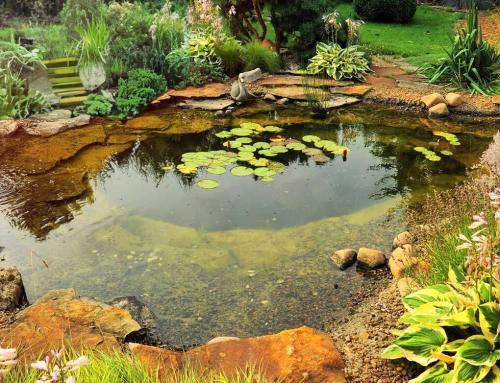 Effectively Reducing Duckweed in Your Pond
Effectively Reducing Duckweed in Your Pond
Duckweed (Lamnaceae) are the smallest flowering aquatic plants with a worldwide distribution. Wolffia, Spirodela, and Lemna are three genera in this botanical family. These plants float on the surface of the water as it warms and are mostly all leaf with one or more thread like legs extending downward to absorb nutrients. When water temperatures decline this plant produces a turion and sinks to the bottom of the pond where it remains dormant until spring. Duckweeds are a great food source for a variety of fish and animals with a protein content between 14% -45%. These are fascinating plants with a bad reputation. They grow so rapidly if the conditions and nutrients are available and will cover the entire surface of your pond making it look like a sea of green.
The following methods for reducing duckweed can be used separately or in conjunction. When your pond matures to the point that duckweed is present, you need to consider nutrient management and organic sediment reduction.
Chemical applications: Aquatic chemical applications for killing duckweed will provide quick short term results. The pond surface will be mostly free of duckweed or water meal and look great for a while. If the applicator misses a patch of plants and the nutrients are still available in the water the duckweed will require a second treatment. The reason we refer to this approach as short term is due to the ability of the expired plant cells to release phosphorous and nitrogen thus supporting another growth cycle.
Mechanical Removal: Trying to surface skim or rake duckweed is a good method to build upper body strength and lessen your time at a health club. Duckweed can regenerate growth in 24 hours and repopulate the pond surface. The duckweed that you do remove can serve as compost and be added to your garden, great for tomatoes.
Aeration and fountains: Diffuser aeration and surface fountains will provide open surface water by pushing the duckweed to the side of the pond and help improve the water quality by off gassing carbon dioxide and permitting sunlight to reach aquatic plants that offer some competition to duckweed. The process of improvement is marginal if the nutrients (P/N) are still available in the water. Aeration can be used with filtration to speed up the process of reducing duckweed growth.
Excavation: Dewatering the pond and removing organic sediments with earth moving equipment may be part of a strategy to improve the condition of mature ponds. This process is slightly cheaper than constructing a new pond but may be like putting perfume on a pig. Care must be taken to prevent the spoils from reentering the pond after you are done and this is important to know, duckweed will regrow if the nutrients to support it are still available. If a stream or drain tiles supply the pond with water, you may want to hold onto your check.
Removing nutrient through filtration, using probiotic bacteria to reduce organic sediments and adding aeration if needed is the best combination of steps to take.


